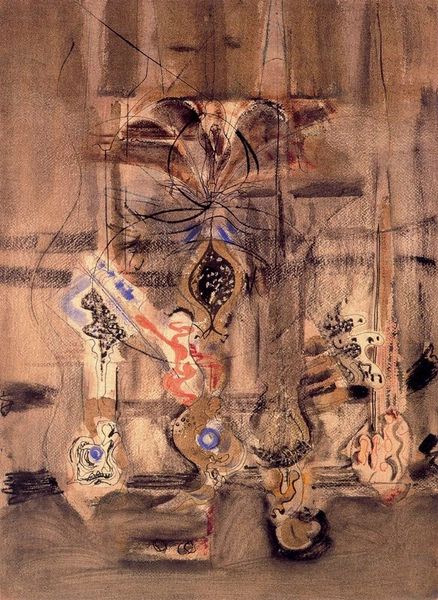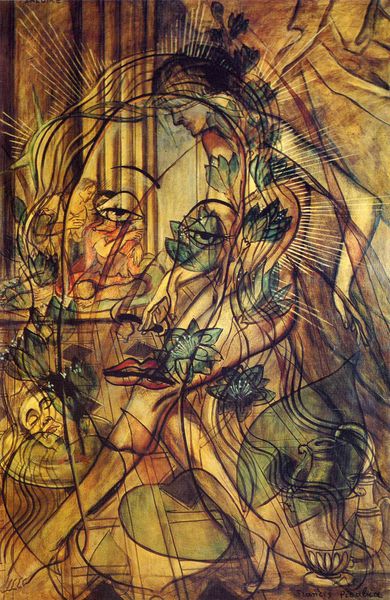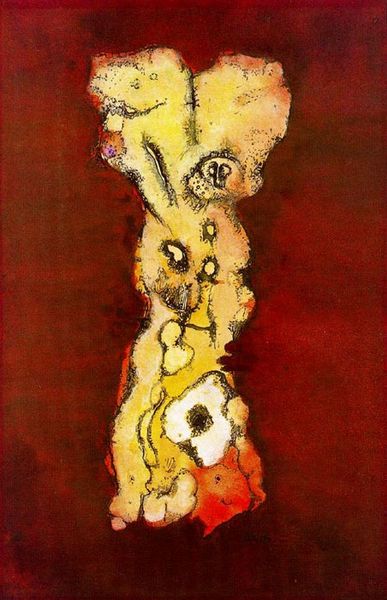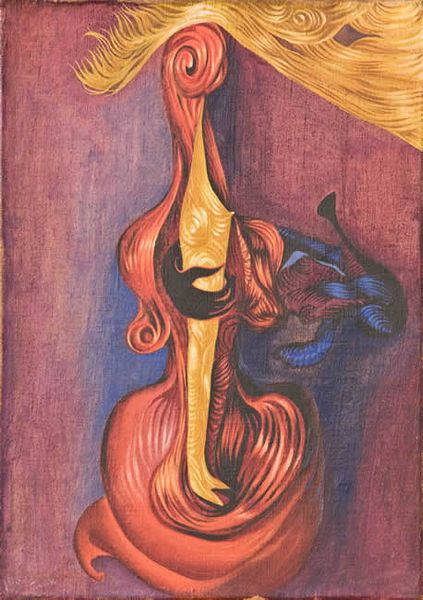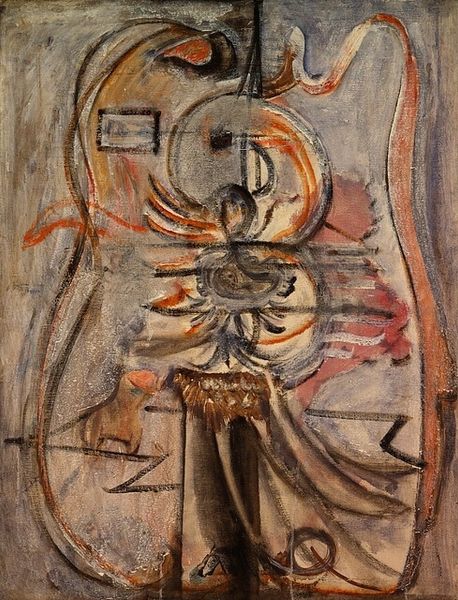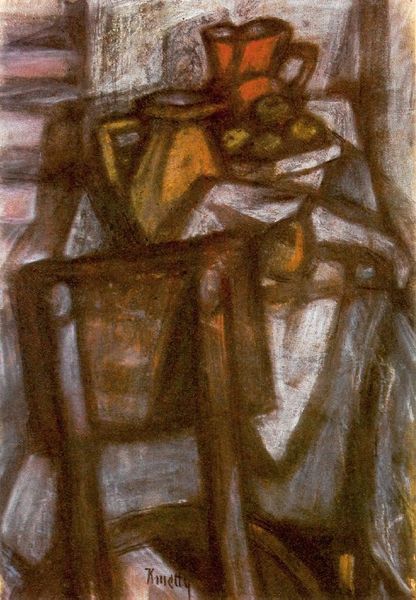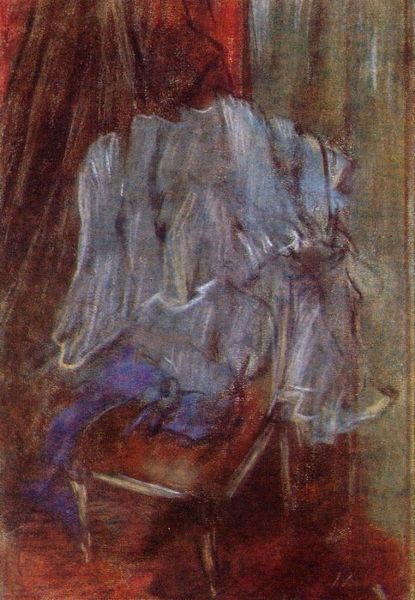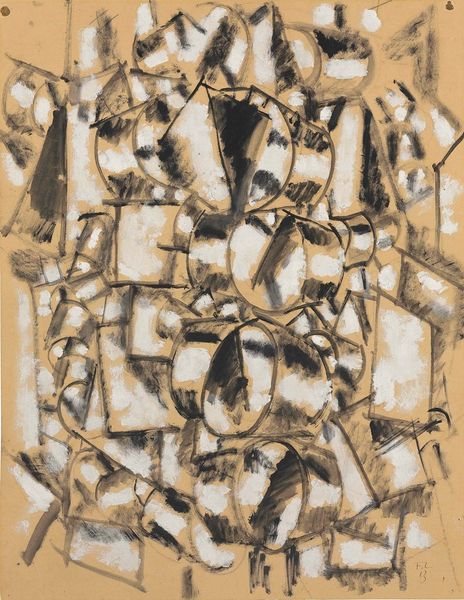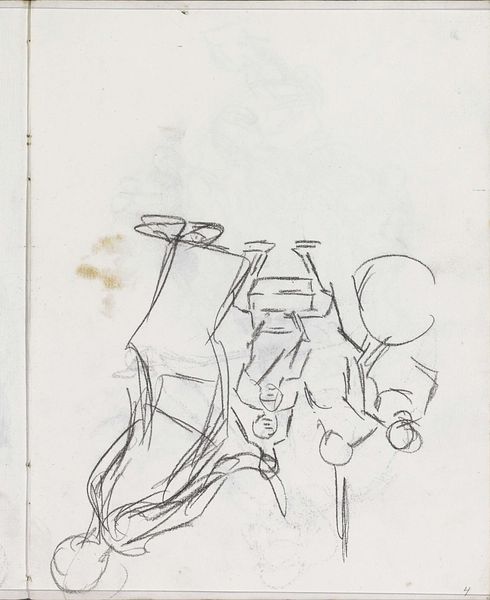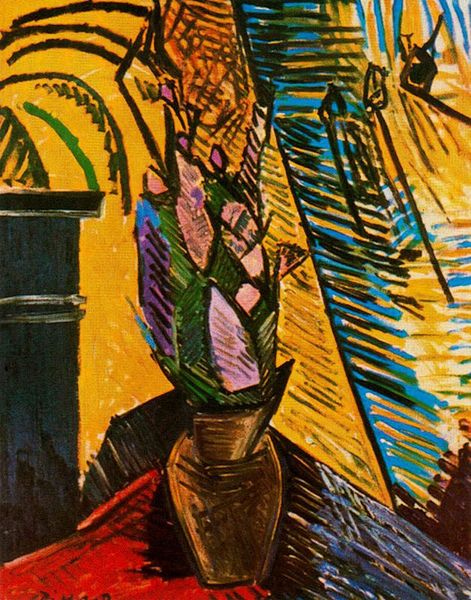
painting, oil-paint
#
painting
#
oil-paint
#
form
#
abstraction
#
line
#
modernism
Copyright: Henri Matisse,Fair Use
Editor: We're looking at Henri Matisse's "Venetian Armchair with Fruits" from 1942, done in oil paint. It's a fascinatingly unfinished, skeletal kind of composition. How do you interpret this work? Curator: It is tempting to focus on the visible object, a chair with fruit, but look closer. Given the date, 1942, and Matisse's location in the South of France during the Nazi occupation, consider the painting as an act of resistance, a claiming of space. Do you see how the looseness of the line can read as freedom? Editor: That's interesting; I was mostly seeing a kind of absence. The sketchy quality made it seem incomplete, like something missing. Curator: Precisely! And what does that absence evoke when thinking of France at the time? Food shortages? Missing loved ones? By painting, Matisse asserts his presence and perhaps more importantly, a vision of a future when the present absences become abundance. What do you make of his decision to represent this subject through line rather than blocks of color, which were becoming a feature of his work around this time? Editor: I hadn't really considered that. The linear style is a very physical act, it traces space. In wartime, everyday freedoms shrink—perhaps his simple depiction of domesticity represents this? Curator: I see your point. The chair isn't just a chair. It’s a symbol. And maybe that's the act of resistance – using the everyday as a reminder and quiet act of self-possession. Editor: So by emphasizing the *presence* of absence and quiet domestic life, we might be looking at an argument against forces bigger than art. It has given me a new perspective to appreciate its beauty. Curator: Absolutely! Considering the broader context reframes our understanding and feeling toward the artwork, enriching our experience.
Comments
No comments
Be the first to comment and join the conversation on the ultimate creative platform.

